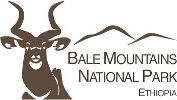History of Bale Mountains National Park
In contrast to other parts of Ethiopia, very little was written about the Bale Mountains prior to the 1950s. This is despite the fact that Goba (a central town within the mountains) was connected to Addis Ababa by a telegraph line in 1931; was served with Ethiopian Airlines DC-3 aircrafts prior to the 1950s; and that the brief period of Italian government (1935-1941) reached the region with stations in Goba, Dinsho and Delo-Mena.
As records begin to appear at the beginning of the 20th century, the Bale Mountains were largely uninhabited. The first recorded visit was by the German naturalist and explorer Carlo Von Erlanger, who reached the Bale Mountains between 1899 and 1901, and documented the existence of the giant molerat. Thereafter, a Frenchman, the Viscompte du Bourg, spent two months in Goba in 1901 hunting elephant to the south and travelling around the mountains. He recorded the existence of elephant and buffalo in the Harenna forest, and commented on the ivory hunting of the area - primarily by mounted horsemen using guns.
Following these early records, there is no information until the late 1950s, when Finnish geographer Helmer Smels arrived in Bale. He made three journeys to Bale and crossed the area from Goba, through Rira, to Delo-Mena. By the time of his visits, just 50 years after Viscompte du Bourg had noted the presence of elephants; they had disappeared from the Harenna forest. Smels noted that although the Sanetti plateau was uninhabited, people drove their cattle to the plateau for grazing during the dry season, sometimes for up to three months. Additionally, the mountains were used for their mineral springs, or horas, to which the pastoral people also drove their cattle. People stayed overnight in simple, temporary shelters made of split bamboo. The Harenna forest was for the most part, uninhabited except for small groups of temporary huts that were established throughout land clearings where people grazed their cattle for part of the year. Although not dwelling there permanently, honey gatherers have always been active in the Harenna forest.
During the same period, a British botanist, Herbert Mooney, visited the Harenna forest and Sanetti plateau. He noted the growing settlement of Rira within the forest and other hamlets of honey gatherers and pastoral people. Although the Harenna forest 20
was probably quite populated in the latter half of the 19th century, the area was depopulated again as a result of a rinderpest epidemic that killed most of the cattle in the early 1890s.
In the 1960s, a Belgian sheep farmer, B.N Weerts, obtained a concession of 400km2 of land within the Dinsho area and Gaysay valley. His developments have since become the nucleus for the headquarters of the national park. The impetus for the present national park, however, began with British naturalist, Dr. Leslie Brown, who visited the area in 1963 and again in 1965. Brown was in the area explicitly to assess the status of mountain nyala. The outcome of his visits was to establish a national park within the Bale Mountains to protect its habitat. John Blower, advisor to the Ethiopian Wildlife Conservation Organization – now the Ethiopian Wildlife Conservation Authority (EWCA) – and a Peace Corps volunteer, followed through with Dr. Brown’s recommendation by surveying the area and proposed boundaries for the park.
At its inception in late 1969, there were few permanent settlers in the park. However, Brown predicted with unnerving accuracy that the agricultural expansion of the plains surrounding the mountains would permanently push rural people to higher and higher altitudes, and into areas they previously used only on a seasonal basis. This has now happened, and the number of permanent houses within the park has been increasing exponentially. A 2011 study indicated approximately 3,700 households with an average of seven people per house for a total of 25,900 people living within the park. Consequently, cattle density is estimated in areas such as the Web valley, a prime Ethiopian wolf habitat, at 250 per km2.
